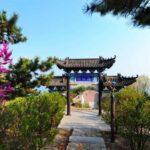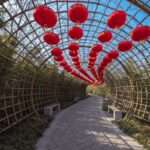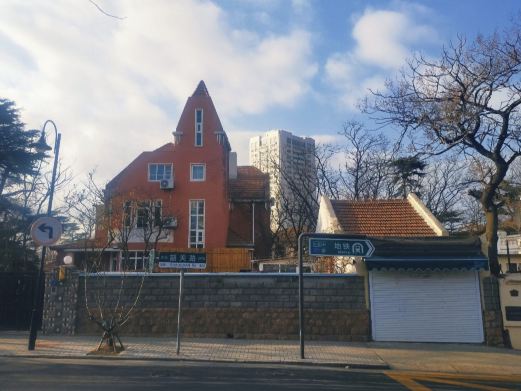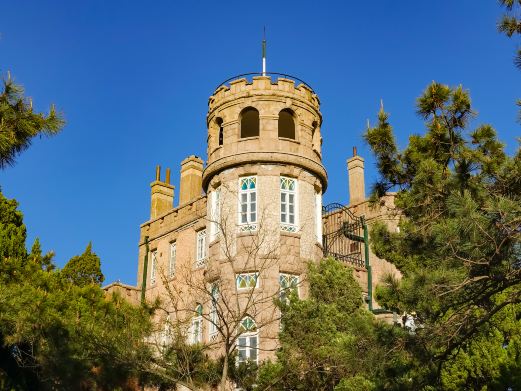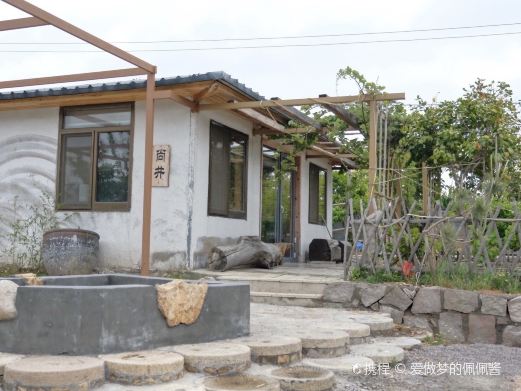The ‘Oriental Wisdom and Beauty’ National Treasure Digital Experience Exhibition is a testament to the times, with each cultural relic reflecting the vast world. Spanning the historical river of five thousand years, among the countless national treasures, lies the genetic code of Chinese civilization and the roots of history. Jointly created by CCTV Documentary, Jinan OCT, Junkan Culture, and the CCTV ‘National Treasure’ visual team, in collaboration with the New Media Creation Team from the Central Academy of Fine Arts, based on the ‘National Treasure’ IP, this brand-new immersive cultural project has officially opened at the OCT Happy Valley Cultural Center in Jinan. The ‘National Treasure’ inherits the creations of the ancients and opens a new chapter in the era, creatively bringing cultural relics to life. On December 3, 2017, the program一经播出, it ignited the screen overnight, popularizing once obscure cultural resources and creating a profound impact. Numerous once-neglected relics have become the stars of the audience, igniting their cultural confidence, with many expressing ‘No regrets in being a part of Huaxia’. The ‘Oriental Wisdom and Beauty’ National Treasure Digital Experience Exhibition extracts nine national treasures representing Eastern wisdom and aesthetics from traditional culture, using contemporary immersive interaction, digital art, and installation art to present these relics in a modern way, creating a theme park-like, transcendent cultural museum. The essence of five thousand years is condensed within these relics, appealing to contemporary spiritual life, unleashing the shock of time accumulation, and elevating culture to new heights. The entire exhibition covers an area of over two thousand square meters, including immersive experience areas, national treasure boxes, national treasure courtyards, and national treasure cultural creations. These relics, which have experienced the vicissitudes of time, reflect the changes in life and spiritual dimensions over thousands of years. Visitors can travel between the past and the present, feeling, gazing, and listening, engaging in conversations with different civilizations, exploring the unchanging wisdom and aesthetics in the long river of time, allowing traditional culture and modern civilization to dialogue across time. The exhibition begins with the immersive space of ‘New Words of the Landscape’, where the production team has digitally translated the ‘Thousand Miles of Rivers and Mountains’ painting with a grand and shocking visual narrative. From interpreting the complex layering process of the original painting, to creating an immersive experience of traveling within the painting’s world, and extracting aesthetic elements from the painting to abstractly interpret its colors and light mysteries, the content gradually changes, forming a multi-dimensional interpretation of the ‘Thousand Miles of Rivers and Mountains’ from a macro perspective to an immersive and micro perspective, thus opening the poetic expression of Eastern ‘wisdom’ and ‘beauty’ in the entire exhibition. Subsequently, eight national treasure boxes are displayed in a staggered manner, vast and演绎 the image of national treasures, constructing more interactive experiences, and feeling the visual charm of national treasures in a scene that is both real and illusory.
The digital glazing interaction with flowing lights and the combination of virtual and real allows one to experience the skill and beauty of Chinese glaze. The various glazed vases of the Qianlong period of the Qing Dynasty. In comparison, people are more willing to call it the ‘mother of porcelain’. ‘The firing of official kiln porcelain was resumed in the Kangxi period of the Qing Dynasty, carried forward in the Yongzheng period, and reached its peak in the Qianlong period. At the peak, there must be a flag flying, and the ‘mother of porcelain’ is this flying flag.’ National Treasure Box I – Various glazed vases of the Qianlong period of the Qing Dynasty. It combines 17 kinds of high and low temperature glazes, including gold glaze, enamel glaze, doucai, blue and white, imitation Ge glaze, imitation Guan glaze, imitation Ru glaze, flambé glaze, turquoise green glaze, light blue glaze,霁蓝釉, sauce glaze, etc. It is a representative of the peak of ancient Chinese superb porcelain-making craftsmanship. In this exhibition item, the physical device of the glazed vase is enlarged and placed in the center of the space. Four giant ancient windows stand on both sides. The audience can experience the complicated and interesting glazing process through the interactive games on the interactive table. The glaze changes and firing process are then presented on the vase body and window lattice, endowing the national treasure itself with a flowing sense of life. Let the audience obtain the visual shock of the beauty of national treasures in the interactive experience of learning through entertainment.
Floating copper tableware with flowing cups and toasts, interpreting the ‘food culture’ passed down for five thousand years. National Treasure Box II – Copper tableware of the Warring States period. Since ancient times, the development of Chinese civilization can be said to go hand in hand with ‘food’. ‘Food’ is not only about what to eat, but also about how to eat. The ‘Book of Rites – Etiquette and Ceremonial’ records in detail the procedures and norms of ancient banquets. From welcoming and seeing off guests, table manners when entering the seat, arranging tableware, to eating meat and drinking soup, there are detailed regulations. We attempt to project the indispensable ‘food culture’ in Chinese civilization onto the abstract interpretation of copper tableware of the Warring States period. The copper tableware of the Warring States period is composed of ear cups, small saucers, plates, boxes, bowls, etc., plus the tableware shell in the shape of a lei, totaling 60 pieces. After being stacked neatly in order of size, they can all be put into the copper pot. The nesting is exquisite and meticulous, which is very rare in the history of archaeological excavations. In the exhibition hall, a long table winding forward in the form of ‘floating wine cups along the winding water’ runs through the entire space. Dozens of copper tableware are arranged in a staggered manner and ‘float’ on the long river of history. The animations on the plates tell about Chinese food civilization from food sources, cooking, to tableware uses and banquet etiquette. The precious fragments of ancient times and the glow of ancient treasures immerse in the ancient life scene and explore the aesthetic mystery of painted pottery patterns. National Treasure Box III – Painted pottery vase with a human head-shaped mouth. As a representative of the earliest painted pottery in China, the painted pottery vase with a human head-shaped mouth that was born eight thousand years ago. Its unique patterns are soaked with the observation and perception of beauty in the childhood of mankind. The shape combines abstract lines with human heads, and the decoration is integrated with sculpture and color decoration, just like a beautiful girl in flowery clothes. Judging from the hairstyle of the human image, it is the style of loose hair of the ancient Qiang people.Therefore, this painted pottery vase with a human head-shaped mouth is of precious historical and artistic value. In the exhibition hall, animated images covering the walls and the floor bring the audience back to ancient times in a freehand way. Painted pottery vases of different sizes and shapes are scattered among them and are magnified ‘unreasonably’, presenting a unique sense of form and a sense of time travel. The patterns on the painted pottery vases gradually transform into natural elements such as birds, fish, and water, full of a rhythm of ‘not knowing where it starts and not knowing where it ends’. The audience can perceive the ancient wisdom of mankind and the aesthetic interests of the ancestors of Dadiwan in a ‘panoramic’ overlook. Five stars converge and stroll in the universe. See the mystery in Han brocade. The galaxy is revealed in the loom. National Treasure Box Four. ‘When five stars appear in the east, it is auspicious for China’. The unearthed brocade arm guard with the words ‘When five stars appear in the east, it is auspicious for China’ is hailed as one of the greatest archaeological discoveries in China in the 20th century. The patterns and words on the brocade are designed according to the five elements theory widely popular in the Eastern Han Dynasty. The five colors of blue, green, red, yellow, and white represent the five major planets of metal, wood, water, fire, and earth respectively, containing the ancient people’s cosmic wisdom of taking advantage of the heavens and the times. The giant loom device standing on one side of the space is combined with the dynamic image of the brocade pouring down, presenting the beauty of brocade craftsmanship with a shocking visual experience. The overwhelming galaxy wraps the entire space. The five stars converge in the air, making people feel as if they are in the center of the universe. The twenty-eight constellations that change in real time with the audience’s footsteps create a mysterious and dreamy feeling of strolling in the universe more vividly. Hermits in the mountains and forests, with indifferent minds and clear aspirations. Repair the partial lost brick paintings and see the character of scholars and hermits. National Treasure Box Five. Brick paintings of Seven Sages of the Bamboo Grove and Rong Qiqi. The brick paintings of Seven Sages of the Bamboo Grove and Rong Qiqi were unearthed from the Gongshan Tomb in Xishanqiao, Nanjing. They combine the Seven Sages of the Bamboo Grove during the Wei and Jin Dynasties and the hermit Rong Qiqi during the Spring and Autumn Period, presenting the earliest existing group of sages. The brick paintings of Seven Sages of the Bamboo Grove and Rong Qiqi, composed of 294 ancient tomb bricks, are re-interpreted and reenacted in the exhibition hall in the form of a three-dimensional jigsaw puzzle device. The audience activates and lights up the eight sages in turn by playing the game of restoring the bricks to the corresponding positions. From physical devices to dynamic images, from static to dynamic, it guides the audience to intuitively experience the structural form and production process of brick paintings through personal participation, and at the same time feel the rhythm of life in the oriental context. The sounds of the great Tang Dynasty linger for thousands of years. Appreciate the charm of san music and see the grand scene of the Music Bureau. National Treasure Box Six. Painted relief of san music. The painted relief of san music shows the lively scene of a band playing. The twelve performers are all women, wearing narrow-sleeved ru shirts and long skirts dragging on the ground. They are divided into two rows, front and back. The musical instruments they hold include konghou, zheng, pipa, clappers, seat drums, sheng, fangxiang, bilu, and transverse flute. In the style of the prosperous Tang Dynasty, it is only seen in China. We try to interpret this national treasure in the form of an interactive ensemble game through induction. The audience triggers the corresponding musical instruments through different musical instrument induction points on the ground. At the same time, the relief figures on the wall are lit up in the form of images, creating a sensory experience of bringing ancient history closer to the eyes. The band plays and the phoenix spreading its wings emerges from it, jointly playing the elegy of ‘Drunk in Peace’, a song of a prosperous age.
It makes people seem to be in the Five Dynasties period. In the interactive experience, they start a cross-temporal ensemble and resonance with the characters in the painting. The ritual of heaven and earth, the eight directions symbolize the earth. Carving jade connects heaven and earth. The divine beast and human face tell the beliefs of prehistoric ancestors. Jade cong is a cylindrical jade ware with a round inner side and a square outer side. It is a ritual vessel used by ancient people to worship gods. Especially in Liangzhu culture, jade cong is developed, and there are many unearthed and handed down ones. National Treasure Box Seven: Liangzhu Jade Cong Exhibition Hall. The structure with a round inner side and a square outer side symbolizes Liangzhu Jade Cong itself. When the audience walks into the interior of the space, it is like entering the jade cong. They can see the dynamic images of Liangzhu life presented on the surrounding curved painted walls, from the Liangzhu life scenes such as making jade and farming during the day to the divine beast images and divine emblem symbols flashing in the starry sky at night. Although the jade cong is small, the ancestors of Liangzhu poured society and beliefs into it, showing the long-standing and unchanging cultural gene of Chinese civilization – power. Because of this, although the encounter with Liangzhu Jade Cong spans five thousand years, we can still feel the kindness and inspiration of ‘the ancient is the present’ in an instant when we gaze at it.
Ten family letters between paper and ink, telling the evolution of the calligraphy style of the sage of calligraphy’s family. National Treasure Box Eight: Wansuitongtiantie. The Wansuitongtiantie is a copy of the calligraphy of Wang Xizhi’s family handed down from the Tang Dynasty. It is also a calligraphy treasure close to Wang Xizhi’s authentic work. The content is ten letters and notes of Wang Xizhi and others. Because there is a small regular script inscription of Wang Fangqing at the end of the scroll with the year title of ‘Wansuitongtian’, it is called Wansuitongtiantie. As the audience triggers the sensing areas on the case, the dynamic letter texts being written appear on the gauze curtain one after another, showing the beauty of calligraphy art of the sage of calligraphy’s family spanning four dynasties and various calligraphy styles on a grand scale. At the same time, the animated images on the desktop of the case humorously restore the situations in the letters, narrowing the distance between the ancient and the present. The above eight national treasure boxes are connected by the national treasure courtyard. Using elements such as perspective windows and corridors, the natural, harmonious and hierarchical oriental aesthetics is expressed in details. The audience can see different box landscapes as they move, obtaining the beauty of indistinctness and incompleteness. There is also a feeling of winding paths leading to secluded places like strolling in a garden, making the browsing method more aesthetic and interesting. Throughout the entire exhibition, nine national treasure cultural relics play the role of narrators of each era, flowing and bringing out different aspects of history. Civilizations are interconnected and become a line, allowing people to see the context behind and ask again, what is the relationship between cultural relics and today, and oneself? As witnesses, survivors and experiencers of civilization, national treasure cultural relics contain infinite wisdom and beauty. It connects the oriental dream in time and space. When we look up at the starry sky, when we stop and look into the distance, when we travel through thousands of waters and mountains, every civilization is under our feet.Operating Hours: Open all year round from Tuesday to Sunday, 09:30-17:30; Closed all day on Mondays; Extended hours during New Year’s Day, Spring Festival, Qingming Festival, Labor Day, Dragon Boat Festival, Mid-Autumn Festival, and National Day, 09:30-21:00.
Preferential Policies for Children: Entry is free for children under 1.2 meters (not including) to the National Treasure Fantasy Space and 360 Limit Flying Ball; Entry is free for children under 0.8 meters (not including) to the Eggshell Pottery Quest and the China National Geographic Exploration Center. Additional Notes: Children under 1.4 meters (including) must be accompanied by an adult to enter.
